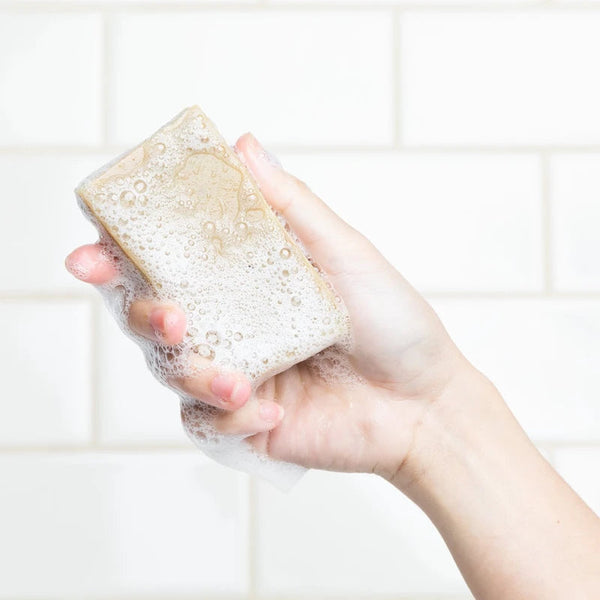Your Cart is Empty

How to: Prevent Dry Skin (Exfoliate) During The Winter:
January 17, 2020 3 min read
Winter is a tough time for our skin. If you live in a cold climate, it can have an even larger impact on the feel, look, elasticity, and health. Exposed areas of skin can become dried out, flake, crack, turn red from inflammation and even cause break-outs.
Why does this happen?
During the colder months, the air dries out. The colder air contains less humidity which speeds up the drying out process of our skin. Areas exposed to the open air are at a higher risk, but colder temps impact the skin on our whole body.
As skin becomes dry and brittle, it begins to flake. These flakes of dead skin cells can accumulate on the skin’s surface, clogging pores and keeping dirt underneath. With a limited ability to cleanse and breath, inflammation and acne can form in many places, even if unnatural for a skin type.

What can be done to prevent it?
Exfoliation - Exfoliation is the process of removing these dead skin cells from pores, while nourishing the skin to repair moisture levels and prevent redness.
Moisturize (with a heavier cream) - Just as important as removing excess skin cells and bacteria from pores, is how we nourish our skin to bring it back to a healthy balance. Because skin is so deprived of moisture during the cold months, it’s important to switch to a heavier moisturizer with a nourishing base, like organic shea.
Increase frequency of care - Just as important as doing the right things to help your skin during winter, it’s also important to take care more frequently. A general rule is to Exfoliate 2-3 times per week, and to moisturize twice daily. It’s also a good idea to keep moisturizer with you during the day to apply to exposed areas (hands, face, lips, etc.). Using a thicker, natural moisturizer will help repair damaged skin, but also protect against further damage.
Does everyone need to exfoliate during winter? The short answer is yes. Even sensitive skin types will want to incorporate gentle exfoliation into their regular routine, especially on areas that appear dried out.

How to restore dry skin:
Step one: Identify trouble areas - Locate areas of skin that seem to dry out the fastest. For some this can be hands, for others it’s feet, heels, neck, and face. These areas are going to need more focus during exfoliation sessions, and more attention with moisturizing.
Step two: Test your exfoliator - Because there are many different skin types, each can react differently to exfoliator severity. In all circumstances its best practice to start with a small portion of product, and increase as you feel necessary. Some areas like feet or hands, may require a more dense exfoliator with sea salt, and for full body you may want a more mild exfoliant, like charcoal soap. For those with sensitive skin, you can mix the exfoliator with water to dilute the grain level.
Step three: Scrub, rinse, and repeat - For areas that are very dry, you want to spend time scrubbing the exfoliator into the skin and allowing the oils to heal and nourish. Feet and hands may require more time than face or body, as these areas tend to take the most abuse from the elements.
Step four: Nourish and Moisturize - Once exfoliation has occurred, you want to nourish and replace the oils that have been stripped from the skins surface. After a bath or shower, apply a full body moisturizer to re-balance the skin and maintain elasticity. This will also help keep the skin in a healthy, resilient state. The more you moisturize, the less issues you should see when the air becomes dry.
Step five: Keep it natural and find the right products for you - As a general rule, natural products without added chemicals are best for your skins health.
Salt N' Sea Facial Scrubs

Salt n’ Sea Exfoliating Scrub
Leave a comment
Comments will be approved before showing up.
Subscribe
Sign up to get the latest on sales, new releases and more …





